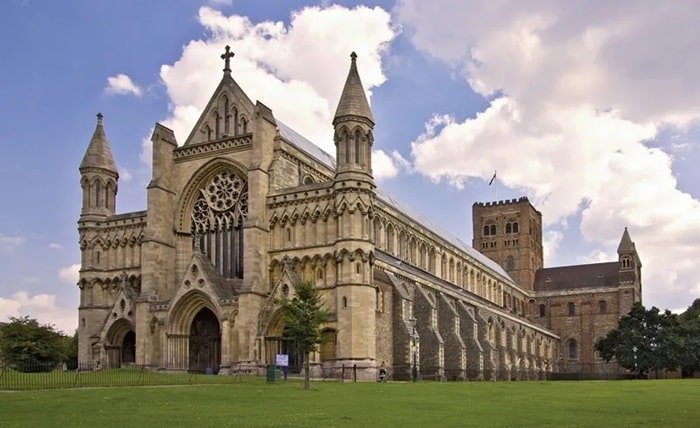If you are on the lookout for some great property in St Albans, then make it a point to know the main difference between a leasehold and freehold piece of property. Property experts, including St Albans Estate agents noted that most apartments tend to be leasehold, and most houses are freehold, but the difference never comes out that clear. The following is an in-depth guide to understand what a “leasehold” means and the implications associated with the purchase of a “leasehold” property in St Albans.
What is a Leasehold Property?
Leasehold is holding the property for a fixed number of years, normally 90 or more years, other than holding property full time. The freeholder, also known as the landlord, has the whole building; that means even his block, in which your apartment is situated, is his. You will usually find this type of tenancy in apartments, Shared Ownership properties, and Right to Buy homes.
Key Facts About Leasehold Properties in St Albans:
- Ownership Structure: You’re purchasing the lease for the property, not the property itself.
- Freeholder Responsibilities: The freeholder typically manages the building’s communal areas, including lifts, stairwells, receptions, and garden areas.
- Restrictions on Alterations: Leasehold properties may have limitations regarding the changes you can make to the property.
- Usage Restrictions: There may be rules around sub-letting, keeping pets, and other uses of the property.
Service Charges and Ground Rent
When looking for apartments for sale in St Albans under leasehold, a purchaser needs to account for other costs such as service charges and ground rent.
Ground Rent
Ground rent is a charge payable yearly to the freeholder in respect of permitting the leaseholder to own a property on their land. It is usually between £50 and £100 per annum, though newer developments in St Albans may charge slightly more. Remember that such fees can be legally varied from time to time.
Service Charges
The service charge is related to the maintenance of a building and its communal parts; it usually includes building insurance. Properties equipped with luxury amenities like a gym or concierge services might also have higher service charges.
Make sure these are factored into your calculation: The above fees are very substantive in determining the whole amount that shall be spent regarding owning a leasehold property.
Leasehold Lengths and Their Importance
When buying a leasehold property in St Albans, one of the critical aspects to investigate is the lease’s remaining length. This is important because once the lease expires, ownership reverts to the freeholder. Engaging the best real estate agents in the area can provide valuable insights and ensure a smooth transaction process.
Key Considerations:
- Value Impact: Properties with shorter leases can lose value, and once the lease expires, the property belongs to the freeholder.
- Extending the Lease: It’s possible to extend the lease after purchasing the property, but it can be costly, and you’ll need to own the property for at least two years.
- Mortgage Difficulties: Properties with less than 90 years remaining on the lease can be challenging to finance, as lenders are often hesitant to approve mortgages for them.
Negotiating Lease Length Before Purchase
Before purchasing, it’s easier to negotiate the lease terms, including its length. Aim to secure a lease with at least 90 years remaining to avoid difficulties in financing or reselling the property.
The Process of Buying a Leasehold Property in St Albans
1. Research the Market
- Identify leasehold properties in St Albans that meet your requirements.
- Compare service charges and ground rent across similar properties.
2. Review the Lease Agreement
- Check for limitations on property use, alterations, and sub-letting.
- Clarify your responsibilities versus the freeholder’s obligations.
3. Consult a Conveyancing Solicitor
- Work with a solicitor experienced in leasehold transactions to review the lease terms.
- Ensure you understand all fees, restrictions, and potential future costs.
4. Survey the Property
- Conduct a thorough survey to identify any issues that could affect the value or require negotiation.
5. Negotiate Terms and Extend Lease (if needed)
- Negotiate with the freeholder to extend the lease, especially if it’s below 90 years.
- Try to agree on reasonable service charges and ground rent.
6. Finalize the Purchase
- Once satisfied with the lease terms and property condition, proceed with the purchase.
Advantages of Buying a Leasehold Property in St Albans
- Affordability: Leasehold apartments often offer better value for money than freehold houses.
- Low Maintenance: The freeholder usually manages communal area maintenance.
- Amenities: Many leasehold properties include shared amenities like gyms, gardens, or concierge services.
Potential Challenges of Leasehold Ownership
- Lease Extensions: Extending the lease can be expensive and time-consuming.
- Rising Fees: Ground rent and service charges may increase over time.
- Sale Difficulties: Selling leasehold properties with short leases can be challenging.
Final Thoughts
Buying a leasehold property in St Albans can be a rewarding investment if you understand the implications and thoroughly research your options. Be sure to carefully review the lease, understand the associated costs, and negotiate favourable terms before committing to the purchase.
Key Takeaways
- Understand Leasehold vs. Freehold: Know what you’re buying and the implications of leasehold ownership.
- Factor in Additional Costs: Ground rent and service charges can add significant expenses.
- Check the Lease Length: Properties with leases below 90 years may face mortgage challenges and loss of value.
- Consult Experts: A conveyancing solicitor experienced in leaseholds is vital to ensure a smooth purchase process.
By taking the time to thoroughly research and negotiate, you’ll be well-prepared to navigate the St Albans leasehold property market successfully.

